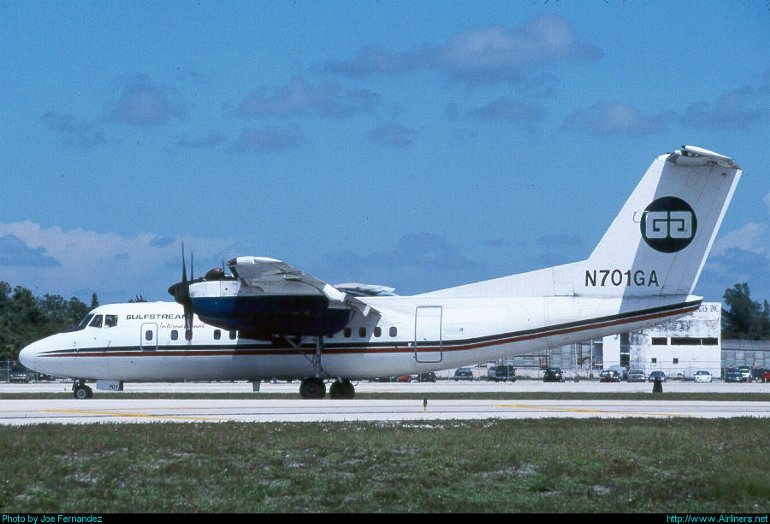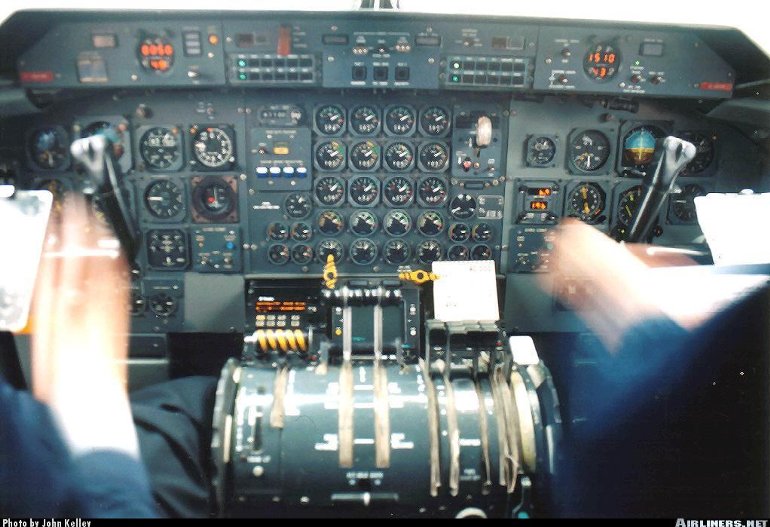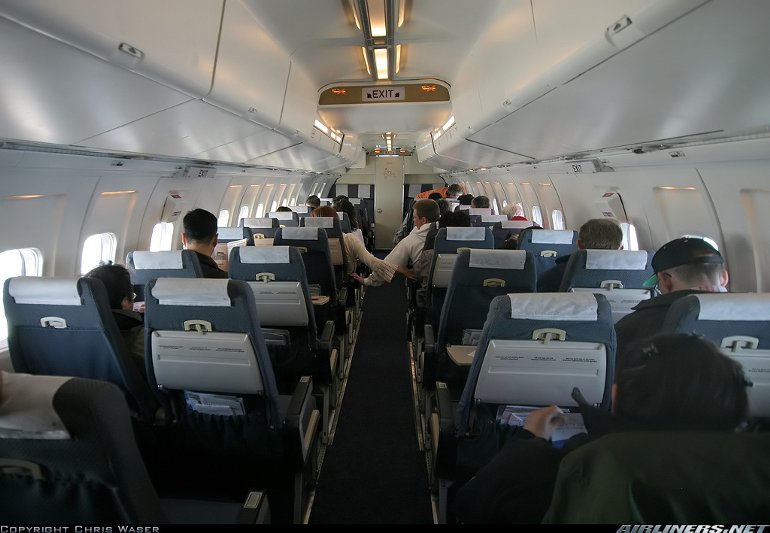Aircraft Technical Data
De Havilland Canada Dash 7



| Details | |
| Country of Origin | Canada |
| Type | STOL turboprop regional airliner |
| History | Despite being out of production for some years now, the four engine de Havilland Canada Dash 7 remains unrivalled because of its impressive STOL and low noise capabilities. The Dash 7 (or DHC7) was designed as a STOL (short takeoff and landing) 50 seat regional airliner capable of operating from strips as short as 915m (3000ft) in length. The main design features to achieve such a capability were an advanced wing and four Pratt & Whitney PT6A turboprops. Double slotted trailing edge flaps run the entire span of the high mounted wing, dramatically increasing the lifting surface available for takeoff. Extra lift is also generated by the airflow over the wing from the relatively slow turning propellers. The wings also feature two pairs of spoilers each - the inboard pair also operate as lift dumpers, the outboard pair can act differentially in conjunction with the ailerons to boost roll control. Financial backing from the Canadian Government allowed the launch of the DHC7 program in the early 1970s, resulting in the maiden flight of the first of two development aircraft on March 27 1975. The first production Dash 7 flew on March 3 1977, the type was certificated on May 2 1977 and it entered service with Rocky Mountain Airways on February 3 1978. The standard passenger carrying Dash 7 is the Series 100, while the type was also offered in pure freighter form as the Series 101. The only major development of the Dash 7 was the Series 150, which featured a higher max takeoff weight and greater fuel capacity, boosting range. The Series 151 was the equivalent freighter. Production of the Dash 7 ended in 1988, following Boeing's takeover of de Havilland Canada. |
| Powerplants | Four 835kW (1220shp) Pratt & Whitney Canada PT6A50 turboprops driving four blade constant speed Hamilton Standard propellers. |
| Performance | Max cruising speed 428km/h (230kt), long range cruising speed 400km/h (215kt). Service ceiling 21,000ft. STOL takeoff distance at 18,600kg (41,000lb) TO weight 670m (2260ft). Range with 50 passengers and reserves 1270km (690nm), range with standard fuel and three tonne payload 2168km (1170nm). 150 - Range with 50 passengers at max cruising speed 2110km (1140nm), with max fuel 4670km (2525nm) |
| Weights | 100 - Operating empty 12,560kg (27,690lb), max takeoff 19,958kg (44,000lb). 150 - Operating empty 12,465kg (27,480lb), max takeoff 21,320kg (47,000lb). |
| Dimensions | Wing span 28.35m (93ft 0in), length 24.58m (80ft 8in), height 7.98m (26ft 2in). Wing area 79.9m2 (860.0sq ft). |
| Capacity | Flightcrew of two. Max seating for 54 at four abreast and 74cm (29in) pitch, 50 passengers at 81cm (32in) pitch. In freighter configuration can carry five standard pallets. |
| Production | 111 Dash 7s were built between 1977 and 1988. Approximately 66 were in commercial service as of late 1998. |
| Related Links | De Havilland Canada Dash 7 |
The backbone of this section is from the The International Directory of Civil Aircraft by Gerard Frawley and used with permission. To get your own copy of the book click here. |
|








